Tel: 020 8418 5672
Email: rjbtrainingltd@aol.com
Forklift Training Solutions Ltd
T/A RJB Training
Unit 17, Patch Park Farm
Abridge, Romford
Essex RM4 1AA
Forklift Safety
FORKLIFT SAFETY TRAINING BY THE PROFESSIONALS IN LONDON, ESSEX & HERTFORDSHIRE
If you are looking for forklift safety training in London, Essex & Hertfordshire, contact Forklift Training Solutions Ltd today.
Our safety topics
Safety topic 1: Planning
Safety topic 2: Training
Safety topic 3: Maintenance
Safety topic 4: Thorough examinations
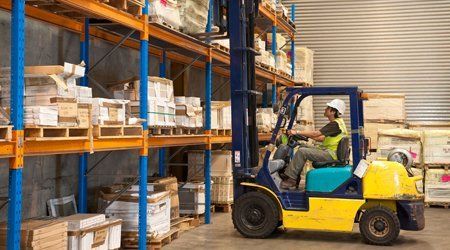
Safety topic 1: Planning
Planning forklift trucks can be dangerous if used incorrectly – and as such are subject to three major pieces of legislation (LOLER 1998, PUWER 1998 and the Health and safety Act 1994).
If you use forklift trucks, it is your legal course of action and is your moral duty to your employees to plan your operations properly before you start.
A risk assessment is simply having the common sense to think through what you’re going to do, in advance, and decide whether it is safe to do or can you make it safer.
You’ll have to think about the site, whether you have the right equipment for the job, including how well it is maintained, operator competence and discipline, and how you protect pedestrians in the area.
If in doubt, ask your FLTA forklift truck provider to carry out a site survey and make recommendations.
You should also make allowance for special risk factors like environment, visibility, securing loads, potential for overloading, overturning and possible hazards nearby. Especially, beware of ‘just this once’ exceptions to your usual, safe operations.
Newspapers are full of tragic accidents where workers spontaneously ‘decided to use a forklift truck’ to help lift or move something unusual with good intentions and dangerous consequences.
If you are attempting something as a one-off, this is all the more reason to think about the risks involved.
For example, if a quick job is just out of reach, it can be so tempting to use a pallet, skip or spillage on the fork to create an impromptu working platform. This can be dangerous and is specifically ruled out by the HSE. Others use forklift trucks for inappropriate towing, which is another highly dangerous practice.
Other key considerations include:
Who can drive?
It is essential that employees know who is and who is not authorized to operate a forklift truck and that this is strictly enforced.
As a basic measure, list the authorized operators in a public place all staff can see. You might also consider restricting access to the tuck keys or codes, or even fitting them with specialist equipment to prevent unauthorized use.
Site layout and repair
Ask yourself:
- Is your site laid out in a way that minimises risky moments like forklift trucks passing through blind doorways or meeting pedestrians?
- Can you reduce the time trucks spend moving in reverse?
- Crucially, how do you keep trucks and pedestrians apart?
- Do you have physical barriers, and clearly marked pedestrian routes and crossing points?
- Have you thought about a one-way system?
- Are the aisles wide enough for safety when a truck is fully loaded?
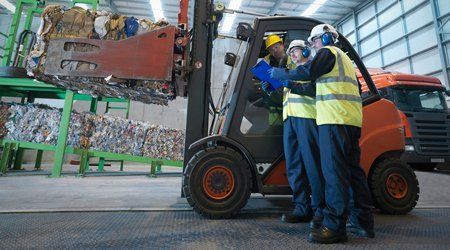
It is also important to look after the space. Sometimes, accidents happen because the floor needs repairs, or simply because it is untidy. This will cause a truck to swerve around and obstacle, or even tip over.
Keeping trucks speed in control is crucial to avoid overturning and collisions. There is no officially recommended speed limit – that is down to your risk assessment – but it is important to set one, and then enforce it, whether using signage, management procedures with clear sanctions, or by fitting technical speed limiters.
Refuelling and recharging
Whether your truck is diesel, electric or LPG operated, there are particular risks when it is time to refuel your vehicle.
As well as having clear procedures for minor incidents like spillages, be careful that operators aren’t overwhelmed by a build-up of fumes and that they’re well aware of the risk of explosion. You’d be amazed how many operators use refuelling or recharging as an opportunity for a sly cigarette!
Extra safety equipment
There are misconceptions about how various safety equipment like flashing lights and reversing alarms are compulsory by law. They are not but that doesn’t mean you shouldn’t consider them if you identify a particular risk you want to reduce.
One area where there is often confusion is whether a truck requires special customization for us on the road, and other outdoor areas accessed by private vehicles. If the journey is less than 1,000 yards, it usually doesn’t but it does need to be registered, taxed and insured. Additionally, the operator should be highly experienced, well aware of the extra risks involved and in possession of a current car diving licence.
Remember
Remember that your well-planned safety policies are useless unless clearly communicated to the front-line and properly enforced. A piece of paper in a filing cabinet won’t stop workers taking risks: if you’re their supervisor, that’s your job.
You don’t need to be a forklift truck operator, but you do need a bit of common sense, enough training to tell what’s safe and what isn’t and the ability and authority to act when you see something wrong.
Safety topic 2: Training
Whether it’s a huge container handler, a reach truck or a simple hand pallet truck, the single most important element in forklift truck safety is arguably the operator, which makes all the more worrying that there so many myths about training and, especially, so-called licences.
Here are what the relevant documents – PUWER 1998 and the HSE’s Approved Code of Practice (L117) actually tell us.
Licence to kill
Recent research by the FLTA revealed as many as 80% of job adverts for forklift truck operators insisted upon a ‘forklift truck licence’. The problem is there’s no such thing.
A current certificate is the required evidence of training. However, it is still the employer’s responsibility to ensure that the certificate covers the specific equipment to be used and to issue written authorization for the operators.
Taking past training as a driving licence to operate any truck, anywhere, can prevent this important process and the matter is confused further by genuine licences issued overseas which, while perfectly legal in their own country, carry no weight in the UK.
Even if a potential operator has good sound skills, it is likely they will need some kind of specific training for your particular equipment, or at least formal familiarization with your procedures, location and tasks.
Similarly, some people believe there’s a requirement to have a driving licence before operating a forklift truck. Not so; indeed, under certain circumstances (and supervision) it may be possible for people as young as sixteen to act as forklift operators.
There are, of course, exceptions – such as driving on the public highway.
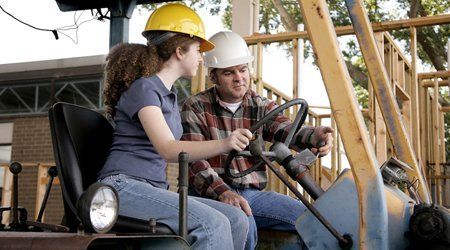
Freshening up
There is a further, widespread misconception that forklift training must be refreshed after a set number of years.
In fact, what is required is for drivers’ abilities to be monitored and formerly assessed on a regular basis, with additional training given as necessary. This means training might be necessary more or less often than a set schedule would allow.
Don’t forget, the HSE currently recognizes a number of accrediting bodies for forklift operator training. It is recommended that any trainer you employ should be accredited by at least one of these bodies.
Not just drivers
Alongside your operator training, remember to include a provision for managers and supervisors who will need to spot and rectify dangerous practice, and for colleagues working alongside forklift trucks, will be much safer if they understand the particular risks involved.
Safety topic 3: Maintenance
The importance of looking after a forklift truck properly cannot be understated. While it might be tempting to save time by dealing with faults as they occur, this can have serious consequences on your operations, including breakdowns and the resulting unplanned (and costly) stoppages. Worst still, neglecting maintenance can lead to serious accidents and cause you to fall foul of the law.
The Provision and Use of Work Equipment Regulations 1998 (PUWER 98), Regulation 5, states: “Every employer shall ensure that work equipment is maintained in an efficient state, in efficient working order and in good repair.”
Primarily, this ensures that the equipment is safe. However, the state of maintenance has clear implications on productivity.
Keep your truck in check
A sound system of daily or pre-shift checks is the cornerstone of good maintenance, ensuring essential fluids are kept topped up and potential defects are identified before they become a problem.
Daily checks should be completed by forklift truck operators at the start of their shift or working day, as required by their employer. These should be recorded formally and carried out properly.
A range of items will be looked at by the operator, including:
- Any outstanding faults
- Obvious leaks
- Warning lights
- Tyres, wheels and nuts
- Damage to vital components
This is by no means an exhaustive list. For further guidance on the items, which your pre-shift check should cover, refer to guidance from your forklift truck’s manufacturer, your dealer, or the FLTA’s top selling Daily Checks booklet.
Importantly, the time allocated for pre-shift or daily checks should not be pre-determined. This will allow the operator time to properly inspect the truck, so that any defects can be identified. It’s essential for safety, so it takes as long as it takes.
When problems are spotted, operators should record the issue, alert their supervisor and wait for authority to proceed.
Tread carefully
As the only part of a forklift truck which is always in contact with the ground, a tyre can be especially vulnerable to damage, making them a potentially dangerous and expensive hazard.
When damaged, in poor condition, or (in the case of pneumatic tyres) under or over inflated, tyres may adversely affect a truck’s stability. Therefore, checking of all tyres is an important element of a daily or pre-shift check, as well as routine preventative maintenance.
Action should be taken to replace damaged or worn forklift trucks tyres without delay. Importantly, only trained forklift engineers may fit or repair tyres.
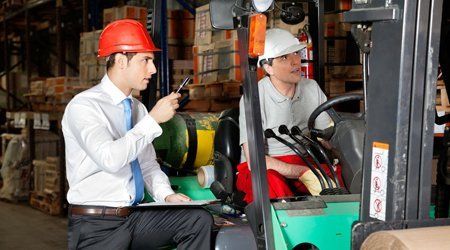
Breathe easy
The operation of forklift trucks in confined spaces may generate dangerous levels of poisonous fumes. As important as this is, there is no easy way to detect what is going on, especially if work patterns vary. It is therefore very important that risks are understood.
Diesel engines may produce white smoke, especially when cold. Excessive blue or black smoke may indicate that maintenance is required. LPG trucks require regular maintenance to reduce fume hazards.
Preventative maintenance
Rather than waiting for a fault to occur, a programme of planned preventative maintenance should be followed. If you use hired forklift trucks, you must allow your hire company regular access for this purpose.
This should be scheduled in accordance with the recommendations of the manufacturer of the equipment. Guidance on this can be provided by the forklift truck dealer who provided the equipment.
The time interval between services will vary according to:
Type of truck
Intensity of use
Working environment
For maintenance purposes, forklift trucks are regarded as ‘plant’. Accordingly, time intervals are recorded in hours, but your dealer will translate this into months to help you identify dates for planned maintenance.
Cleaning
Many forklift trucks operate in clean, dry areas, meaning they require little cleaning, if any. Special attention, however, is required for trucks at risk from contaminants, such as dust, mud and corrosive agents, which can cause premature failure.
Keeping your truck clean will reduce this risk, however, inappropriate cleaning may make the problem worse. Considerations include:
Chains need to retain their lubrication: do not steam clean or power wash
Sidewalls of pneumatic tyres can be weakened by high pressure water – particularly when heated – and strong soaps
Bearings, seals, gaiters and anything electrical are not designed for close contact with high pressure or steam equipment.
Hard-setting or corrosive substances should be washed off immediately after contact
Safety topic 4: Thorough examinations
While many employers are aware of the need for thorough examination, all available research indicates that there is still a great deal of confusion surrounding this statutory inspection.
Thorough examination and the law
Currently there is no single set of rules which are exclusively for forklift trucks. Instead, they are governed by two separate pieces of legislation which embrace a wide range of equipment.
The Provision and Use of Work Equipment Regulations 1998 (PUWER 98) applies to everything from photocopiers to motor vehicles, while the Lifting Operations and Lifting Equipment Regulations 1998 (LOLER 98) covers anything used for lifting, including tower cranes and dumb waiters.
This legislation is open to interpretation, which occasionally leads some employers to fall foul of the law.
For example, some inspections carried out under the banner of thorough examination only cover the lifting mechanism of a forklift truck – doing the minimum to satisfy LOLER 98. However employers also have a separate duty under PUWER 98 to ensure equipment is safe to use and that requires a competent person to carry out a much more detailed test.
To overcome this situation, the two leading organizations in the forklift truck industry – the British Industrial Truck Association (BITA) and the Fork Lift Truck Association (FLTA) – joined forces to create a single, national procedure available to truck users, wherever their industry or location.
The resulting organisation, Consolidated Fork Lift Truck Services ( CFLTS), has since established a comprehensive procedure and strict code of practice, giving forklift truck users a consistent, safe national standard certain to fulfil both LOLER and PUWER requirements.
Take responsibility
Whether a forklift is owned outright or hired – even for a single day – users and fleet owners should be fully aware of their responsibilities.
At present, all forklift trucks require a thorough examination – at least once every 12 months – as specified in LOLER 98.
Many managers assume this is automatically covered in the hire agreement, but legislation clears says that thorough examination is actually the legal responsibility of the company employing the truck operator. They must ensure a current and valid thorough examination certificate is in place and available for inspection.
If a truck is hired on a short-term basis users would rightly expect the equipment to have a current Report of thorough examination. This needs to be checked. The best thing to do is ask for a copy with the hire documents.
However, if a truck is owned outright or being used on a long-term basis, the truck’s user may decide which examiners can carry out its thorough examination.
A competent person is an experienced service engineer or examiner who meets the general criteria set out by LOLER 98. For all practical purposes, there are three types of person who may carry out a thorough examination:
- An authorized forklift truck engineer
- An insurance company lifting equipment officer
- An examiner from a specialist inspection company
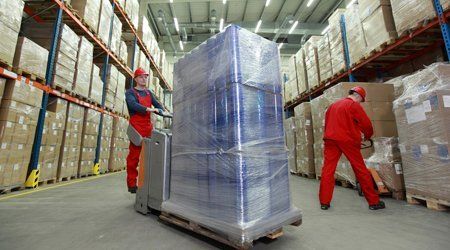
A thorough examination
During a CFTS thorough examination, a competent person will undertake a comprehensive examination which will meet the requirements of both LOLER 98 and PUWER 98
Under LOLER 98, the truck’s lifting equipment we be inspected, including:
Mast
Carriage
Tilt mechanism
Forks
Chains
Load guard
Attachments/side shift (if fitted)
Hydraulic
Rating plate
In addition, other vital, safety-related components will be checked to meet PUWER 98, such as:
Overhead guard
Brakes
Wheels and tyres
Steering
Seat mountings
Safety equipment
Traction system
Chassis
Importantly, many so-called thorough: examinations outside the CFTS scheme actually cover only the LOLER 98 elements – meaning, for example, there is no guarantee that brakes we be checked unless the inspector is CFTS accredited.
Timing
Although a thorough examination for a forklift truck is similar to an MOT test for a car or a lorry, it is not valid for a set period on time.
This is because there are different operational conditions that can impact on how quickly important components wear out. For example, wear on a truck being used in a cement works is very different to that of a truck being used in a standard warehouse. The competent person who carries out the thorough examination will determine the appropriate time interval.
For information on thorough examination intervals, see the calculator on the CFTS website: https://www.thoroughexamination.org/how-often-is-thorough-examination-required
Talk to our professionals to discuss your training requirements. We also offer industrial training.
For forklift safety training in London, Essex & Hertfordshire call Forklift Training Solutions Ltd
on
020 8418 5672
Thank you for contacting us.
We will get back to you as soon as possible
We will get back to you as soon as possible
Oops, there was an error sending your message.
Please try again later
Please try again later

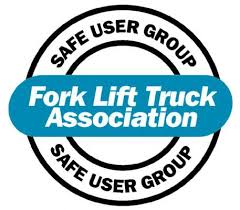

© 2024. The content on this website is owned by us and our licensors. Do not copy any content (including images) without our consent.

